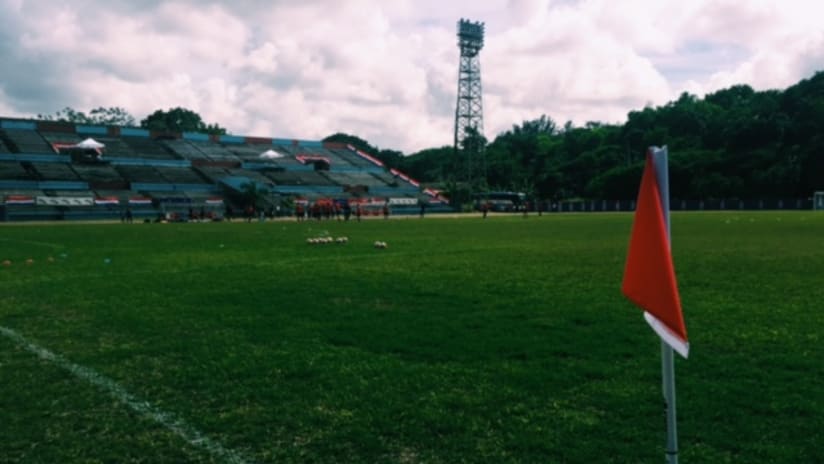HAVANA – The clues started immediately that Thursday’s US men’s national team training camp would unroll in a way unlike ever before.
Sure, on the outskirts of Havana, there were the usual hallmarks of a trip through the CONCACAF hinterlands: air that suffocated like a hot, damp blanket; palm trees and thick rainforest clumps looming just beyond the stadium’s boundaries. Loose dogs either ran stray, or worked some kind of security function, or both.
But then, you could look just to the left of the Estadio Pedro Marrero, very much plunked in the middle of a city, without the usual parking areas or remove from the street. There, in pink concrete, stood the Salón Rosado de la Tropical Benny Moré, a music venue dedicated to the memory of the late Cuban jazz great. On the other side, blocked partially by a desiccating cactus, stood a government-run agricultural stall, a faded portrait of Che Guevara peeling on one wall.
And here’s how USMNT head coach Jurgen Klinsmann rolled up, minutes before a scheduled afternoon press conference – in a mint-condition, cherry-red vintage convertible, tailed by another one in candy pink. And then, a press contingent – almost entirely of Cuban and Spanish-language media – crammed into a dim room for a Q&A session that would, quite literally, happen around a conference table.
Where most Klinsmann sessions in the United States would focus on tactics, strategies, and finer points, here, mostly, people wanted to know why. Why Cuba, and why now?
“Sometimes it’s not only about the football side for developing players,” he said, “but also off the field, too.”
Then he paused, as his government-appointed translator repeated back his words in Spanish, in lively, extremely Cuban-accented Spanish, complete with animated head motions and facial expressions. “You have to combine, both on and off the field,” as a team, Klinsmann said.
Friday’s friendly against Cuba (4 pm ET, ESPN2/UniMás) – the first between the two countries since 1947 – indeed helps in a run to the USMNT’s next World Cup Qualifying match, against Mexico on Nov. 6 in Columbus. But while Klinsmann expressed gratitude to the Cuban Football Federation for the warm-up match, he stressed the importance of what the game means for cultural exchange.
“I told the players – and my staff – to go out and explore the city and get a feeling for Havana,” he said. “Some players even went to a school class, surprisingly, and were part of a classroom.”
Still, in a training session open to media for about 30 minutes – nearly all that seemed humanly bearable under the direct tropical sun – the team returned to business. And yes, regular training stayed possible in the venue’s conditions. While the stands and general structure are, themselves, historic, the field itself remains a dedicated soccer field, rather than being repurposed from another sport. (Conditions in the surrounding track ring remained rain-soggy, but the squish largely stopped short of the pitch.)
On seemingly fresh grass, all the kids and veterans alike ran through drills. Christian Pulisic dribbled a ball feet away from Jordan Morris, while Ethan Horvath, who joined the team late in Miami, practiced goalkeeper drills alongside William Yarbrough and David Bingham. In the background, Cuban flags flapped along nearly every visible surface, and waved in a row in front of a water tank painted with a soccer ball and the ubiquitous slogan, “Sí se puede" (Yes you can).
In the stands, a small collection of Cubans watched the proceedings, clapping and smiling at their ostensible opponents. And here’s where more of Klinsmann’s press conference words took on an extra twinge of meaning in the diplomatic powers of the sport.
“I played for years and wherever I went, the door opened, and there was football,” he said. “The beautiful side of this game is that it’s a global game. You learn to take people as they are.”














